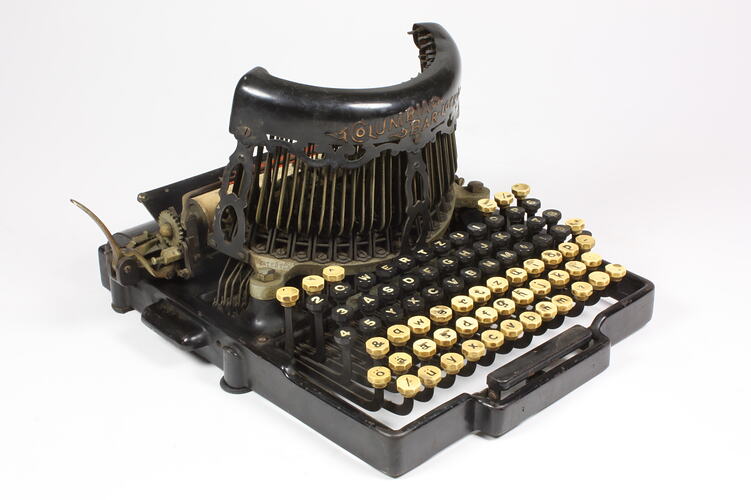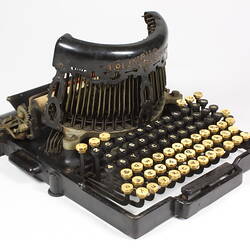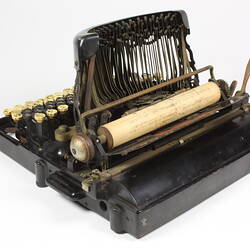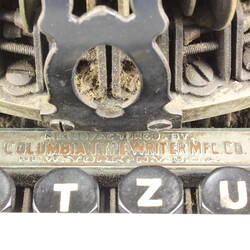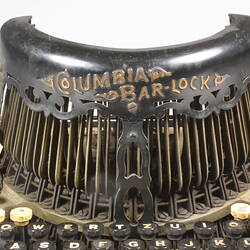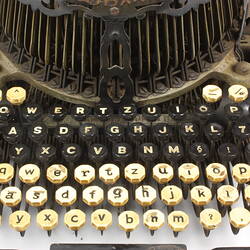Summary
Typewriter of the typebar downstrike class, made by the Columbia Typewriter Manifacturing Company of New York, U.S.A. The design of this typewriter was first patented by Charles Spiro of New York in 1889 and the first models were called simply Bar-Lock. The name Columbia Bar-Lock was introduced from about 1900. In England, the typewriters were marketed under the name Royal Bar-Lock. In 1914 the Barlock Typewriter Company of London purchased all Bar-Lock patents, names and manufacturing equipment from the Columbia Company and began production in England.
The Bar-Lock name came from the design of the typewriters striking mechanism. As the typebar descended on to the platen it encountered an array of vertical pins arranged in a semicircle centred on the printing point. The typebar in its final descent to the platen was 'locked' in position by moving between the appropriate pair of pins.
Physical Description
Black-finished metal frame. Cylindrical platen. 78 typebars in vertical semicircular typebasket in fron of platen. Typebars pivot down on to top of platen. Semicircular plate centred on printing point is fitted with vertical pins to align typebars as the strike platen. Semicircular metal cover over ends of typebars. Ink ribbon carried between two spools on horizontal axes. Six-row keyboard with total of 78 character keys plus one key marked 'M.R.'. Upper three rows with total of 36 keys are for uppercase letters and numerals. Lower three rows with total of 36 keys are for lowercase letters and other characters. An additional six keys above top row of keyboard are for punctuation characters. All keys are octagonal in shape. Upper three rows are black with white lettering. All other keys are cream coloured with black lettering. Short spacebar at front of keyboard.
More Information
-
Collecting Areas
-
Acquisition Information
Donation from Unknown Source, May 1970
-
Manufacturer
Columbia Typewriter Company, New York, New York, United States of America, 1900-1910
-
Inscriptions
On front of typebasket cover: 'COLUMBIA / BAR-LOCK' On plate attached to frame below typebasket: 'MANUFACTURED BY / NO. COLUMBIA TYPEWRITER MFG. CO. 10 / NEW YORK, N.Y., U.S.A.' On paper guide, decal with: 'GENERAL VERTRIEB /JOE LOSTI, WIEN 1, LAURENZERBERG 4 / TELEPHON: 12740' Engraved on left-hand support for typebasket: 'PATENTED' Seroal number engraved on right-hand support for typebasket: '94799'
-
Classification
-
Category
-
Discipline
-
Type of item
-
Overall Dimensions
370 mm (Width), 380 mm (Depth), 230 mm (Height)
-
Keywords
